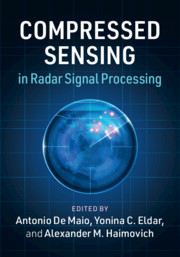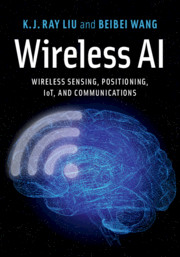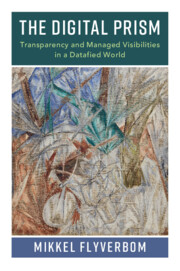Refine search
Actions for selected content:
48287 results in Computer Science
1 - Introduction: Adaptation in a Convergence Environment
-
-
- Book:
- Adaptation in the Age of Media Convergence
- Published by:
- Amsterdam University Press
- Published online:
- 21 November 2020
- Print publication:
- 01 October 2019, pp 7-30
-
- Chapter
- Export citation
4 - From Paratext to Polyprocess: The “Quirky” Mashup Novel
-
-
- Book:
- Adaptation in the Age of Media Convergence
- Published by:
- Amsterdam University Press
- Published online:
- 21 November 2020
- Print publication:
- 01 October 2019, pp 87-110
-
- Chapter
- Export citation
3 - Filing off the Serial Numbers: Fanfiction and its Adaptation to the Book Market
-
-
- Book:
- Adaptation in the Age of Media Convergence
- Published by:
- Amsterdam University Press
- Published online:
- 21 November 2020
- Print publication:
- 01 October 2019, pp 57-86
-
- Chapter
- Export citation
2 - Adaptation as Connection: A Network Theoretical Approach to Convergence, Participation, and Co-Production
-
-
- Book:
- Adaptation in the Age of Media Convergence
- Published by:
- Amsterdam University Press
- Published online:
- 21 November 2020
- Print publication:
- 01 October 2019, pp 31-56
-
- Chapter
- Export citation
Analysis of a network’s asymptotic behavior via its structure involving its strongly connected components
-
- Journal:
- Network Science / Volume 8 / Issue S1 / July 2020
- Published online by Cambridge University Press:
- 01 October 2019, pp. S82-S109
-
- Article
- Export citation
Frontmatter
-
- Book:
- Adaptation in the Age of Media Convergence
- Published by:
- Amsterdam University Press
- Published online:
- 21 November 2020
- Print publication:
- 01 October 2019, pp 1-4
-
- Chapter
- Export citation
Contents
-
- Book:
- Adaptation in the Age of Media Convergence
- Published by:
- Amsterdam University Press
- Published online:
- 21 November 2020
- Print publication:
- 01 October 2019, pp 5-6
-
- Chapter
- Export citation

Compressed Sensing in Radar Signal Processing
-
- Published online:
- 30 September 2019
- Print publication:
- 17 October 2019
The Induced Removal Lemma in Sparse Graphs
- Part of
-
- Journal:
- Combinatorics, Probability and Computing / Volume 29 / Issue 1 / January 2020
- Published online by Cambridge University Press:
- 30 September 2019, pp. 153-162
-
- Article
- Export citation
Knowledge reuse in industrial practice: evaluation from implementing engineering checksheets in industry
- Part of
-
- Journal:
- Design Science / Volume 5 / 2019
- Published online by Cambridge University Press:
- 30 September 2019, e15
-
- Article
-
- You have access
- Open access
- HTML
- Export citation

Wireless AI
- Wireless Sensing, Positioning, IoT, and Communications
-
- Published online:
- 27 September 2019
- Print publication:
- 03 October 2019

The Digital Prism
- Transparency and Managed Visibilities in a Datafied World
-
- Published online:
- 27 September 2019
- Print publication:
- 17 October 2019
TWO-ECHELON PRODUCTION INVENTORY SYSTEMS WITH STRATEGIC CUSTOMERS
-
- Journal:
- Probability in the Engineering and Informational Sciences / Volume 35 / Issue 2 / April 2021
- Published online by Cambridge University Press:
- 27 September 2019, pp. 258-275
-
- Article
- Export citation
5 - Causation in a Physical World: An Overview of Our Emerging Understanding
-
- Book:
- Time and Causality across the Sciences
- Published online:
- 24 September 2019
- Print publication:
- 26 September 2019, pp 72-85
-
- Chapter
- Export citation
Contents
-
- Book:
- Time and Causality across the Sciences
- Published online:
- 24 September 2019
- Print publication:
- 26 September 2019, pp v-vii
-
- Chapter
- Export citation
1 - An Introduction to Time and Causality
-
- Book:
- Time and Causality across the Sciences
- Published online:
- 24 September 2019
- Print publication:
- 26 September 2019, pp 1-13
-
- Chapter
- Export citation
8 - Causation, Time Asymmetry, and Causal Mechanisms in the Social Sciences
-
- Book:
- Time and Causality across the Sciences
- Published online:
- 24 September 2019
- Print publication:
- 26 September 2019, pp 138-157
-
- Chapter
- Export citation
Five Tips for a Successful API
-
- Journal:
- Natural Language Engineering / Volume 25 / Issue 6 / November 2019
- Published online by Cambridge University Press:
- 26 September 2019, pp. 769-772
-
- Article
-
- You have access
- Open access
- HTML
- Export citation
